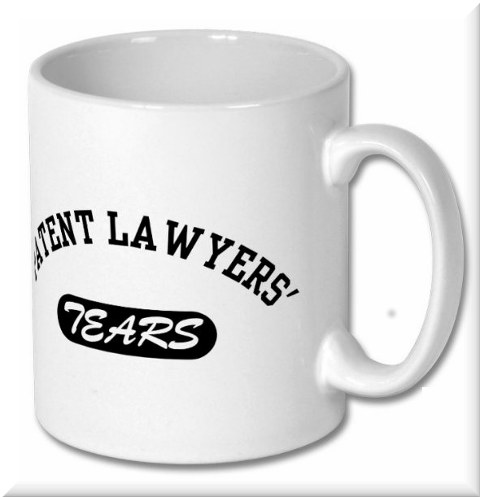

"Funny timing to bring up Alice all of a sudden (4 years after the decision and just days apart from Oil States)."To put it a little more bluntly, patent maximalists are still licking their wounds over Oil States -- a decision that makes PTAB stronger and patents more limited in scope/magnitude. The patent microcosm generally promotes the next PTAB threats, namely cases like Droplets v Iancu or some class action 'stunt'. They also push the SAS case, we noted about 24 hours ago in this advertisement for a 'stacked panel' event. "The panel will provide an analysis of the Court’s Oil States and SAS decisions and discuss the impact of these decisions on daily patent practice," it says. Guess who's on this panel...
"Watchtroll went back to writing about WesternGeco yesterday. It's old."Going back to April 24th (around the same time as the Oil States decision), mind what Workman Nydegger's Brad Barger wrote: "Is Alice Coming Home From Wonderland? Finally Finding Direction in the Fairy Tale of 101 Jurisprudence"
Funny timing to bring up Alice all of a sudden (4 years after the decision and just days apart from Oil States). To quote:
In its 2014 decision, Alice v. CLS Bank, the Supreme Court dramatically reshaped the application of 35 U.S.C. ۤ 101, which defines patent eligible subject matter. Much to the chagrin of inventors and patent practitioners around the world, the Supreme Court established a poorly defined test that the courts have struggled to apply in ways that result in consistent and predictable outcomes. The muddled rules and guidance provided by the courts have resulted in similarly inconsistent and unpredictable application of the law at the United States Patent and Trademark Office (USPTO). Strong anecdotal and statistical differences in the application of Alice could be seen across different art units, between different examiners within the same art units, and even between different panels of the Federal Circuit.
Fortunately, it appears that the USPTO is now taking concrete steps to stabilize the application of the Alice by examiners within the USPTO. Much of this change at the USPTO appears to be driven by the appointment of Director Iancu. In a recent appearance before the Senate Judiciary Committee, Director Iancu testified that the USPTO was addressing the confusion related to Alice by “work[ing] to provide more concrete tests – to the extent possible given Supreme Court precedent – that guide examiners and the public toward finding the appropriate lines to draw with respect to eligible subject matter.”
"Oil States not interesting anymore?"Around the same time the patent microcosm (people who profit from lawsuits) also brought up the Kamstrup A/S case -- one that we mentioned earlier this month. To quote:
In Apator Miitors ApS v. Kamstrup A/S, No. 2017-1681 (Fed. Cir. Apr. 17, 2018), the Federal Circuit affirmed the PTAB’s conclusion that Apator failed to swear behind a prior art reference, because Apator did not sufficiently corroborate the inventor’s testimony of conception prior to the reference’s filing date.
On this point, the PTAB recently conducted a trial and heard oral arguments from a canna-patent owner and a party seeking to invalidate that patent in a cannabis IPR currently pending before the PTAB. Specifically, IPR2017-00503 (previously flagged here) involves one of GW Pharma's patents related to treating seizures with cannabidiol (CBD), the non-psychoactive cannabinoid found in the cannabis plant. GW Pharma is a British biopharmaceutical company known for its cannabis-based products, which it protects, in part, with its large cannabis-related patent portfolio (comprising around 100 patents and published applications in the U.S. alone), many of which are directed to treating diseases with cannabis-based compounds. GW Pharma is also currently pursuing FDA approval for its cannabinol drug for treatment of seizures and is well on its way to having the first drug derived from the cannabis plant approved in the U.S.
"We tend to focus on PTAB cases which involve Alice/ۤ 101."Speaking of ۤ 101, on May 8th an interesting docket report came out from XpertUniverse, Inc. v Cisco Systems, Inc.
This is extraordinary especially because the Supreme Court (in Alice) changed patenting criteria in the US -- serving to annul pretty much all software patents -- but a jury relied on a very old ruling to deny justice:
The court granted plaintiff's motion for summary judgment that defendant's challenge under 35 U.S.C. ۤ 101 was barred by collateral estoppel because a jury found the patent-in-suit valid in the parties' prior action.
"Speaking to people in the jury in technical terms won't help; it often just confuses them and it makes it easier for lawyers to manipulate them."This is why we oppose patent trials by juries, who are typically nontechnical and incapable of grasping the underlying claims in patents. Jury trials are OK for particular things that everyday newspapers cover (e.g. petty crime), but patents? Speaking to people in the jury in technical terms won't help; it often just confuses them and it makes it easier for lawyers to manipulate them.
To say more on €§ 101, Gary Cohen, Mark Nowotarski and Trent Ostler did some propaganda on it half a week ago. We don't want to delve into every single sentence and paragraph (in effect amplifying them), so we'll just say that when Watchtroll uses terms like "Surviving Alice" it is basically perpetuating the bogus narrative that people with bogus patents that they often use to scam people into paying 'protection' money are actually the victims, trying to merely "survive" in court. It's them who file the lawsuits! ⬆